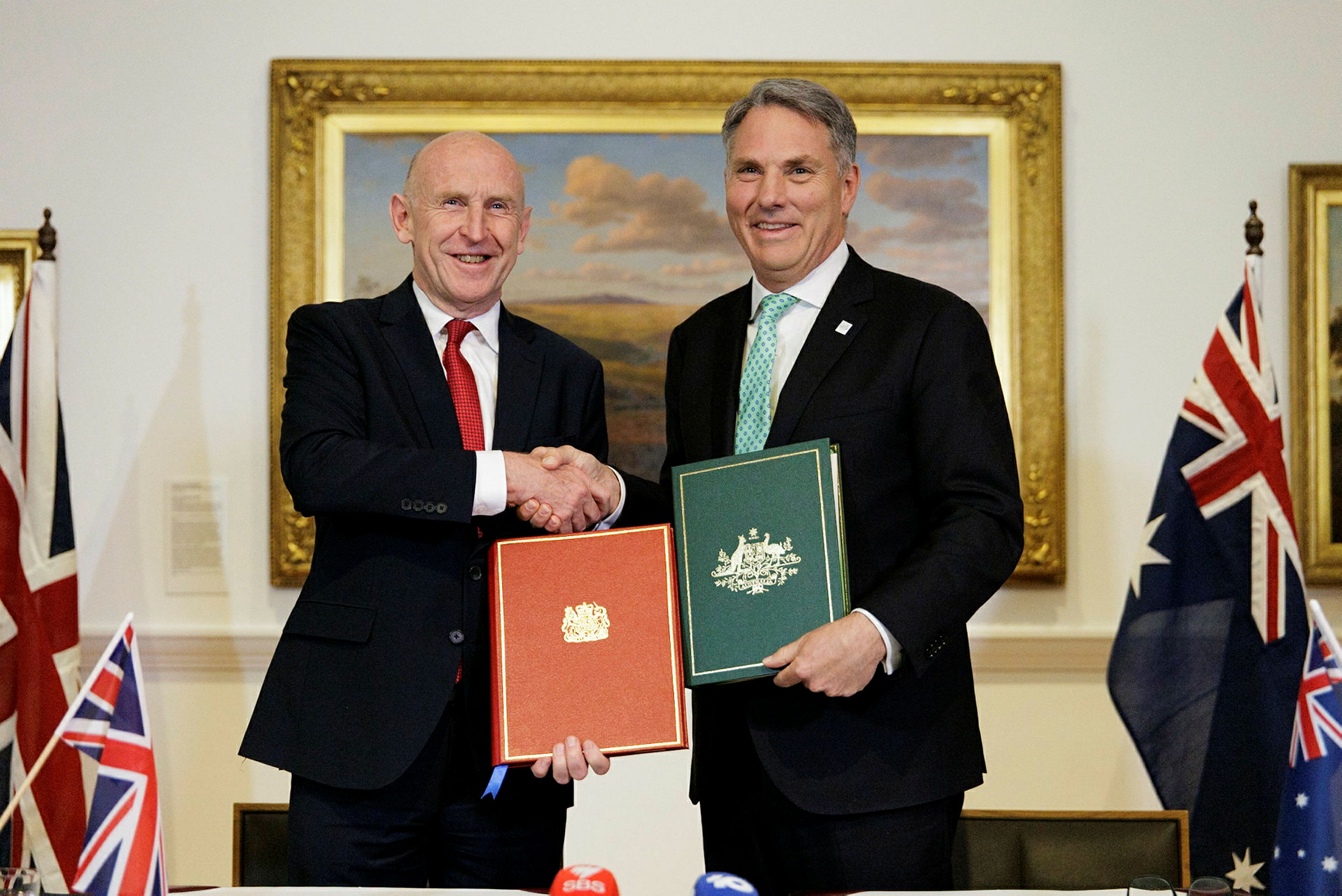A new treaty between the Governments of Australia and the United Kingdom (UK) has further secured the delivery of Australia's first locally constructed nuclear submarine.
The Nuclear Powered Submarine Partnership and Collaboration Agreement (the Treaty) was signed on Saturday 26 July 2025 and will underpin cooperation between Australia and the UK on the design, build, operation, sustainment, and disposal of SSN-AUKUS submarines.
The Treaty complements the AUKUS Naval Nuclear Propulsion Agreement , between Australia, the United Kingdom and the United States, which entered into force in January 2025.
The Geelong Treaty will support the development of the required workforce, infrastructure and regulatory systems for Australia to produce and operate a nuclear-submarine capability. Construction will commence at the end of the decade at Osborne in South Australia, with the SSN-AUKUS based on the UK's next-generation design.
Australia's Deputy Prime Minister and Minister for Defence, Richard Marles signed the treaty with his UK counterpart, Secretary of State for Defence, John Healey, which will underpin the next 50 years of UK-Australian bilateral cooperation under AUKUS Pillar I.
'This Treaty has been worked on for a long time. It is a critical milestone in the pursuit of bringing to fruition AUKUS. It is the natural evolution of what we've agreed and really in terms of what's in the Treaty, it is putting into treaty form what had already been agreed between our two countries.' said Deputy Prime Minister Marles.
'It underpins the joint development by the United Kingdom and by Australia of the same class of submarine, which both countries will operate from the early 2040s. It is a project which will see the development of thousands of jobs in Australia and the most high‑tech production line in Australia.
'Underpinning the AUKUS agreement is a number of bilateral arrangements, and what we are signing today is the most significant of those in respect of our bilateral arrangements with Australia and the United Kingdom. We do a whole lot of work with the United States in the context of AUKUS, and we do it as a group of three.'

The Deputy Prime Minister emphasised that Australian industry will benefit from the Treaty, with increased access to UK markets, reduced trade barriers, and greater opportunities for growth and investment. In turn, this will make a substantial contribution to the strength and resilience of trilateral submarine supply chains.
The Treaty also further enables port visits and the rotational presence of an UK Astute-class submarine at HMAS Stirling under Submarine Rotational Force - West . This element, which also involves United States SSNs, is directly connected to Australia becoming sovereign ready to operate and maintain SSNs from the early 2030s.
Importantly, the Treaty re-affirms Australia's international obligations and commitment to the global nuclear non-proliferation regime, as well as respective domestic and international obligations relating to nuclear safety, security and safeguards.
The Treaty will now undergo the required ratification processes in both Australia and the UK.






